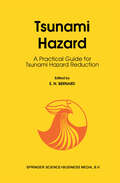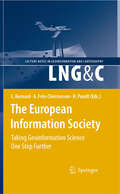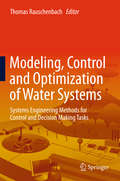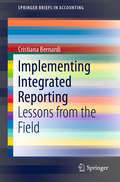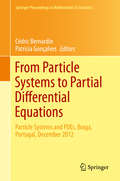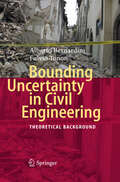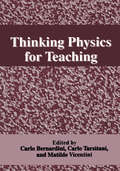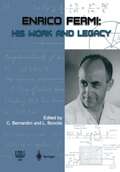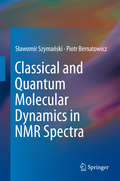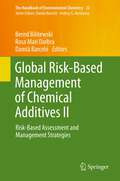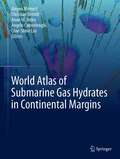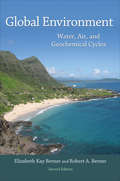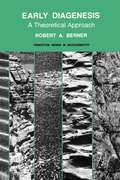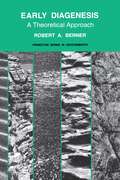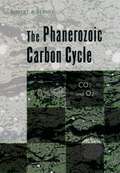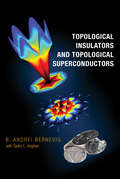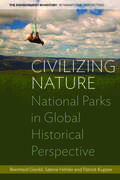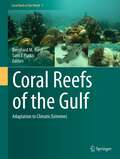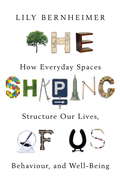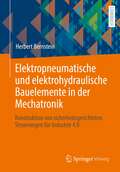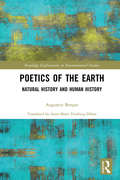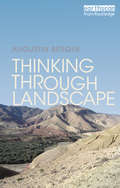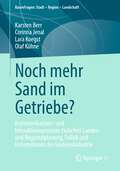- Table View
- List View
Tsunami Hazard: A Practical Guide for Tsunami Hazard Reduction
by E. N. BernardThe Fourteenth International Tsunami Symposium held from 31 July to 3 August 1989 in Novosibirsk, U.S.S.R., was sponsored by the International Union of Geodesy and Geophysics. Sixty-five scientists from 13 countries met to exchange information on recent advances in tsunami research. The Symposium was a great success due to the enthusiasm of the participants, the quality of research presented, and the great organization provided by the Soviet hosts. Teams of dedicated workers, under the fine leadership of Academician A. S. Alexseev and Dr V. K. Gusiakov, blended social and scientific activities in a memorable fashion. The 62 presentations of the Symposium were divided into six areas of research: generation (7), propagation (12), coastal effects (10), observations (11), seismics and tectonics (10), and hazard mitigation (12). A summary of the research presented appears as the first article in this special issue. Following the Symposium, a team of session chairmen nominated 20 of these oral presentations to be published in a special issue devoted to the International Tsunami Symposium.
The European Information Society: Taking Geoinformation Science One Step Further (Lecture Notes in Geoinformation and Cartography)
by Lars Bernard Anders Friis-Christensen Hardy PundtThe Association of Geographic Information Laboratories for Europe (AGILE) was established in early 1998 to promote academic teaching and research on GIS at the European level. AGILE seeks to ensure that the views of the geographic information teaching and research community are fully represented in the discussions that take place on future European - search agendas and it also provides a permanent scientific forum where geographic information researchers can meet and exchange ideas and - periences at the European level. In 2007 AGILE provided - for the first time since its existence - a book constituting a collection of scientific papers that were submitted as fu- papers to the annual AGILE conference and went through a competitive and thorough review process. Published in the Springer Lecture Notes in Geoinformation and Cartography this first edition was well received within AGILE and within the European Geoinformation Science com- nity as a whole. Thus, the decision was easily made to establish a Springer th Volume for the 11 AGILE conference held 2008 in Girona, Spain, and led to what you now hold in your hands.
Modeling, Control and Optimization of Water Systems: Systems Engineering Methods for Control and Decision Making Tasks
by Thomas Bernard Albrecht Gnauck Marco Jacobi Divas Karimanzira Oliver Krol Torsten Pfützenreuter Buren Scharaw Thomas WesterhoffThis book provides essential background knowledge on the development of model-based real-world solutions in the field of control and decision making for water systems. It presents system engineering methods for modelling surface water and groundwater resources as well as water transportation systems (rivers, channels and pipelines). The models in turn provide information on both the water quantity (flow rates, water levels) of surface water and groundwater and on water quality. In addition, methods for modelling and predicting water demand are described. Sample applications of the models are presented, such as a water allocation decision support system for semi-arid regions, a multiple-criteria control model for run-of-river hydropower plants, and a supply network simulation for public services.
Implementing Integrated Reporting: Lessons from the Field (SpringerBriefs in Accounting)
by Cristiana BernardiSustainability, the environment, corporate accountability, social justice, integration – these are the buzzwords of our century. This book takes readers on a journey through the landscape of standard-setting giants and corporate reporting paradigms through the eyes of two companies that have taken very different paths toward integrated thinking. Both stories provide new insights into the transition to integrated reporting, as envisaged by the International Integrated Reporting Council (IIRC), and how integrated reporting is reshaping our views on transparency. However, the top-down approach adopted in studies of integrated reporting in practice has left many questions unanswered: Is it effective? How does it evolve into established practice? Is it just another management fad? This bottom-up critique answers all these questions and one more: Could integrated reporting become the corporate reporting norm? We shall see.Given its depth of coverage, the book appeals to IIRC academic community, participants in integrated reporting networks, and others interested in integrated reporting.
From Particle Systems to Partial Differential Equations: Particle Systems and PDEs, Braga, Portugal, December 2012 (Springer Proceedings in Mathematics & Statistics #75)
by Cédric Bernardin Patricia GonçalvesThis book presents the proceedings of the international conference Particle Systems and Partial Differential Equations I, which took place at the Centre of Mathematics of the University of Minho, Braga, Portugal, from the 5th to the 7th of December, 2012.The purpose of the conference was to bring together world leaders to discuss their topics of expertise and to present some of their latest research developments in those fields. Among the participants were researchers in probability, partial differential equations and kinetics theory. The aim of the meeting was to present to a varied public the subject of interacting particle systems, its motivation from the viewpoint of physics and its relation with partial differential equations or kinetics theory and to stimulate discussions and possibly new collaborations among researchers with different backgrounds.The book contains lecture notes written by François Golse on the derivation of hydrodynamic equations (compressible and incompressible Euler and Navier-Stokes) from the Boltzmann equation, and several short papers written by some of the participants in the conference. Among the topics covered by the short papers are hydrodynamic limits; fluctuations; phase transitions; motions of shocks and anti shocks in exclusion processes; large number asymptotics for systems with self-consistent coupling; quasi-variational inequalities; unique continuation properties for PDEs and others.The book will benefit probabilists, analysts and mathematicians who are interested in statistical physics, stochastic processes, partial differential equations and kinetics theory, along with physicists.
Bounding Uncertainty in Civil Engineering: Theoretical Background
by Alberto Bernardini Fulvio TononTaking an engineering, rather than a mathematical, approach, Bounding uncertainty in Civil Engineering - Theoretical Background deals with the mathematical theories that use convex sets of probability distributions to describe the input data and/or the final response of systems. The particular point of view of the authors is centered on the applications to civil engineering problems, and the theory of random sets has been adopted as a basic and relatively simple model. However, the authors have tried to elucidate its connections to the more general theory of imprecise probabilities, Choquet capacities, fuzzy sets, p-boxes, convex sets of parametric probability distributions, and approximate reasoning both in one dimension and in several dimensions with associated joint spaces. If choosing the theory of random sets may lead to some loss of generality, it has, on the other hand, allowed for a self-contained selection of the topics and a more unified presentation of the theoretical contents and algorithms. With over 80 examples worked out step by step, the book should assist newcomers to the subject (who may otherwise find it difficult to navigate a vast and dispersed literature) in applying the techniques described to their own specific problems.
Thinking Physics for Teaching
by C. Bernardini C. Tarsitani M. VicentiniThe research in Physics Education has to do with the search of solutions to the complex problem of how to improve the learning and teaching of physics. The complexity of the problem lies in the different fields of knowledge that need to be considered in the research. In fact, besides the disciplinary knowledge in physics (which must be considered from the conceptual, the historical, and the epistemological framework), one has to take into account some basic knowledge in the context of psychology and the cognitive sciences (for the general and contextual aspects of learning) and some basic knowledge in education and comunication (for what concerns teaching skills and strategies). Looking back at the historical development of the research one may recognize that the complexity of the endeavour was not clear at first but became clear in its development, which shifted the focus of the research in the course of time from physics to learning to teaching. We may say that the research started, more than 30 years ago, with a focus on disciplinary knowledge. Physicists in different parts of the western world, after research work in some field of physics, decided to concentrate on the didactical comunication of physical knowledge.
Enrico Fermi: His Work and Legacy
by Carlo Bernardini Luisa BonolisEnrico Fermi’s scientific work, noted for its originality and breadth, has had lasting consequences throughout modern science. Written by close colleagues as well as scientists whose fields were profoundly influenced by Fermi, the papers collected here constitute a tribute to him and his scientific legacy. They were commissioned on the occasion of his 100th birthday by the Italian Physical Society and confirm that Fermi was a rare combination of theorist, experimentalist, teacher, and inspiring colleague. The book is organized into three parts: three biographical overviews by close colleagues, replete with personal insights; fourteen analyses of Fermi's impact by specialists in their fields, spanning physics, chemistry, mathematics, and engineering; and a year-by-year chronology of Fermi’s scientific endeavors. Written for a general scientific audience, Enrico Fermi: His Work and Legacy offers a highly readable source on the life of one of the 20th century's most distinguished scientists and a must for everybody interested in the history of modern science.
Classical and Quantum Molecular Dynamics in NMR Spectra
by Piotr Bernatowicz Sławomir SzymańskiThe book provides a detailed account of how condensed-phase molecular dynamics are reflected in the line shapes of NMR spectra. The theories establishing connections between random, time-dependent molecular processes and lineshape effects are exposed in depth. Special emphasis is placed on the theoretical aspects, involving in particular intermolecular processes in solution, and molecular symmetry issues. The Liouville super-operator formalism is briefly introduced and used wherever it is beneficial for the transparency of presentation. The proposed formal descriptions of the discussed problems are sufficiently detailed to be implemented on a computer. Practical applications of the theory in solid- and liquid-phase studies are illustrated with appropriate experimental examples, exposing the potential of the lineshape method in elucidating molecular dynamics NMR-observable molecular phenomena where quantization of the spatial nuclear degrees of freedom is crucial are addressed in the last part of the book. As an introduction to this exciting research field, selected aspects of the quantum mechanics of isolated systems undergoing rotational tunnelling are reviewed, together with some basic information about quantum systems interacting with their condensed environment. The quantum theory of rate processes evidenced in the NMR lineshapes of molecular rotors is presented, and illustrated with appropriate experimental examples from both solid- and liquid-phase spectra. In this context, the everlasting problem of the quantum-to-classical transition is discussed at a quantitative level. The book will be suitable for graduate students and new and practising researchers using NMR techniques.
Global Risk-Based Management of Chemical Additives II: Risk-Based Assessment and Management Strategies (The Handbook of Environmental Chemistry)
by Bernd Bilitewski, Rosa Mari Darbra and Damià BarcelóChemical additives are used to enhance the properties of many industrial products. Since their release into the environment is a potential risk for man and nature, their fate and behavior have been investigated in the framework of the European Union-funded project RISKCYCLE. The results are presented in two volumes, Global Risk-Based Management of Chemical Additives I: Production, Usage and Environmental Occurrence and Global Risk-Based Management of Chemical Additives II: Risk-Based Assessment and Management Strategies. This book is the second of the two volumes and features two main parts. In the first part, experts in the field discuss different models related to the assessment of the potential risks posed by chemical additives and analyze their benefits and drawbacks. In the second part, specific case studies in which the models have been applied are presented and the reliability of the models is evaluated.This volume is an invaluable source of information for scientists and governmental agencies dealing with the risk assessment of chemicals on a global scale.
World Atlas of Submarine Gas Hydrates in Continental Margins
by Christian Berndt Jürgen Mienert Anne M. Tréhu Angelo Camerlenghi Char-Shine LiuThis world atlas presents a comprehensive overview of the gas-hydrate systems of our planet with contributions from esteemed international researchers from academia, governmental institutions and hydrocarbon industries. The book illustrates, describes and discusses gas hydrate systems, their geophysical evidence and their future prospects for climate change and continental margin geohazards from passive to active margins. This includes passive volcanic to non-volcanic margins including glaciated and non-glaciated margins from high to low latitudes. Shallow submarine gas hydrates allow a glimpse into the past from the Last Glacial Maximum (LGM) to modern environmental conditions to predict potential changes in future stability conditions while deep submarine gas hydrates remained more stable. This demonstrates their potential for rapid reactions for some gas hydrate provinces to a warming world, as well as helping to identify future prospects for environmental research. Three-dimensional and high-resolution seismic imaging technologies provide new insights into fluid flow systems in continental margins, enabling the identification of gas and gas escape routes to the seabed within gas hydrate environments, where seabed habitats may flourish. The volume contains a method section detailing the seismic imaging and logging while drilling techniques used to characterize gas hydrates and related dynamic processes in the sub seabed.This book is unique, as it goes well beyond the geophysical monograph series of natural gas hydrates and textbooks on marine geophysics. It also emphasizes the potential for gas hydrate research across a variety of disciplines.Observations of bottom simulating reflectors (BSRs) in 2D and 3D seismic reflection data combined with velocity analysis, electromagnetic investigations and gas-hydrate stability zone (GHSZ) modelling, provide the necessary insights for academic interests and hydrocarbon industries to understand the potential extent and volume of gas hydrates in a wide range of tectonic settings of continental margins. Gas hydrates control the largest and most dynamic reservoir of global carbon. Especially 4D, 3D seismic but also 2D seismic data provide compelling sub-seabed images of their dynamical behavior. Sub-seabed imaging techniques increase our understanding of the controlling mechanisms for the distribution and migration of gas before it enters the gas-hydrate stability zone. As methane hydrate stability depends mainly on pressure, temperature, gas composition and pore water chemistry, gas hydrates are usually found in ocean margin settings where water depth is more than 300 m and gas migrates upward from deeper geological formations. This highly dynamic environment may precondition the stability of continental slopes as evidenced by geohazards and gas expelled from the sea floor. This book provides new insights into variations in the character and existence of gas hydrates and BSRs in various geological environments, as well as their dynamics. The potentially dynamic behavior of this natural carbon system in a warming world, its current and future impacts on a variety of Earth environments can now be adequately evaluated by using the information provided in the world atlas. This book is relevant for students, researchers, governmental agencies and oil and gas professionals. Some familiarity with seismic data and some basic understanding of geology and tectonics are recommended.
Global Environment: Water, Air, and Geochemical Cycles, Second Edition
by Elizabeth Kay Berner Robert A. BernerThis newly revised edition of Global Environment discusses the major elements of the geochemical cycles and global fluxes found in the atmosphere, land, lakes, rivers, biota, and oceans, as well as the human effects on these fluxes. Retaining the strengths of the original edition while incorporating the latest discoveries, this textbook takes an integrated, multidisciplinary, and global approach to geochemistry and environmental problems and introduces fundamental concepts of meteorology, surficial geology (weathering, erosion, and sedimentation), biogeochemistry, limnology, and oceanography. New concepts and information in this updated edition include changes of atmospheric carbon dioxide over geologic time, major advances in the study of chemical weathering of rocks, ocean acidification, and important environmental problems, such as the amelioration of the acid rain problem due to reduction in sulfur deposition, problems with nitrification of soils and lakes, and eutrophication of rivers and estuaries. An expanded chapter explores atmospheric chemistry and changing climate, with the most up-to-date statistics on CO2, the carbon cycle, other greenhouse gases, and the ozone hole. Only requiring a fundamental understanding in elementary chemistry, yet taking into account extensive and current data, this text is ideal for students in environmental geochemistry, environmental geology, global change, biogeochemistry, water pollution, geochemical cycles, chemical oceanography, and geohydrology, and serves as a valuable reference for researchers working on global geochemical and environmental issues. Revised edition takes a close look at global fluxes involving the atmosphere, land, lakes, rivers, biota, and oceans, and the human effects on these fluxes Detailed discussion of basic concepts including meteorology, surficial geology (weathering, erosion, and sedimentation), biogeochemistry, limnology, and oceanography An expanded up-to-date chapter on atmospheric chemistry and changing climate, including CO2, other greenhouse gases, and ozone Presentation of major advances in the study of chemical weathering Discussion of current environmental topics Global coverage of environmental problems involving water
Early Diagenesis: A Theoretical Approach
by Robert A. BernerDiagenesis refers to changes taking place in sediments after deposition. In a theoretical treatment of early diagenesis, Robert Berner shows how a rigorous development of the mathematical modeling of diagenetic processes can be useful to the understanding and interpretation of both experimental and field observations. His book is unique in that the models are based on quantitative rate expressions, in contrast to the qualitative descriptions that have dominated the field. In the opening chapters, the author develops the mathematical theory of early diagenesis, introducing a general diagenetic equation and discussing it in terms of each major diagenetic process. Included are the derivations of basic rate equations for diffusion, compaction, pore-water flow, burial advection, bioturbation, adsorption, radioactive decay, and especially chemical and biochemical reactions. Drawing on examples from the recent literature on continental-margin, pelagic, and non-marine sediments, he then illustrates the power of these diagenetic models in the study of such deposits. The book is intended not only for earth scientists studying sediments and sedimentary rocks, but also for researchers in fields such as radioactive waste disposal, petroleum and economic geology, environmental pollution, and sea-floor engineering.
Early Diagenesis: A Theoretical Approach (Princeton Series in Geochemistry #1)
by Robert A. BernerDiagenesis refers to changes taking place in sediments after deposition. In a theoretical treatment of early diagenesis, Robert Berner shows how a rigorous development of the mathematical modeling of diagenetic processes can be useful to the understanding and interpretation of both experimental and field observations. His book is unique in that the models are based on quantitative rate expressions, in contrast to the qualitative descriptions that have dominated the field.In the opening chapters, the author develops the mathematical theory of early diagenesis, introducing a general diagenetic equation and discussing it in terms of each major diagenetic process. Included are the derivations of basic rate equations for diffusion, compaction, pore-water flow, burial advection, bioturbation, adsorption, radioactive decay, and especially chemical and biochemical reactions. Drawing on examples from the recent literature on continental-margin, pelagic, and non-marine sediments, he then illustrates the power of these diagenetic models in the study of such deposits.The book is intended not only for earth scientists studying sediments and sedimentary rocks, but also for researchers in fields such as radioactive waste disposal, petroleum and economic geology, environmental pollution, and sea-floor engineering.
The Phanerozoic Carbon Cycle: CO[2 and O[2
by Robert A. BernerThe term "carbon cycle" is normally thought to mean those processes that govern the present-day transfer of carbon between life, the atmosphere, and the oceans. This book describes another carbon cycle, one which operates over millions of years and involves the transfer of carbon between rocks and the combination of life, the atmosphere, and the oceans. The weathering of silicate and carbonate rocks and ancient sedimentary organic matter (including recent, large-scale human-induced burning of fossil fuels), the burial of organic matter and carbonate minerals in sediments, and volcanic degassing of carbon dioxide contribute to this cycle. In The Phanerozoic Carbon Cycle, Robert Berner shows how carbon cycle models can be used to calculate levels of atmospheric CO[2 and O[2 over Phanerozoic time, the past 550 million years, and how results compare with independent methods. His analysis has implications for such disparate subjects as the evolution of land plants, the presence of giant ancient insects, the role of tectonics in paleoclimate, and the current debate over global warming and greenhouse gases
Topological Insulators and Topological Superconductors
by B. Andrei Bernevig Taylor L. HughesThis graduate-level textbook is the first pedagogical synthesis of the field of topological insulators and superconductors, one of the most exciting areas of research in condensed matter physics. Presenting the latest developments, while providing all the calculations necessary for a self-contained and complete description of the discipline, it is ideal for graduate students and researchers preparing to work in this area, and it will be an essential reference both within and outside the classroom. The book begins with simple concepts such as Berry phases, Dirac fermions, Hall conductance and its link to topology, and the Hofstadter problem of lattice electrons in a magnetic field. It moves on to explain topological phases of matter such as Chern insulators, two- and three-dimensional topological insulators, and Majorana p-wave wires. Additionally, the book covers zero modes on vortices in topological superconductors, time-reversal topological superconductors, and topological responses/field theory and topological indices. The book also analyzes recent topics in condensed matter theory and concludes by surveying active subfields of research such as insulators with point-group symmetries and the stability of topological semimetals. Problems at the end of each chapter offer opportunities to test knowledge and engage with frontier research issues. Topological Insulators and Topological Superconductors will provide graduate students and researchers with the physical understanding and mathematical tools needed to embark on research in this rapidly evolving field.
Civilizing Nature: National Parks in Global Historical Perspective (Environment in History: International Perspectives #1)
by Bernhard Gissibl, Sabine Höhler and Patrick KupperNational parks are one of the most important and successful institutions in global environmentalism. Since their first designation in the United States in the 1860s and 1870s they have become a global phenomenon. The development of these ecological and political systems cannot be understood as a simple reaction to mounting environmental problems, nor can it be explained by the spread of environmental sensibilities. Shifting the focus from the usual emphasis on national parks in the United States, this volume adopts an historical and transnational perspective on the global geography of protected areas and its changes over time. It focuses especially on the actors, networks, mechanisms, arenas, and institutions responsible for the global spread of the national park and the associated utilization and mobilization of asymmetrical relationships of power and knowledge, contributing to scholarly discussions of globalization and the emergence of global environmental institutions and governance.
Coral Reefs of the Gulf: Adaptation to Climatic Extremes (Coral Reefs of the World #3)
by Bernhard M. Riegl and Sam J. PurkisCoral Reefs of the Gulf: Adaptation to Climatic Extremes is a complete review and reference for scientists, engineers and students concerned with the geology, biology or engineering aspects of coral reefs in the Middle East. It provides for the first time a complete review of both the geology and biology of all extant coral areas in the Gulf, the water body between Iran and the Arabian Peninsula. In summer, this area is the hottest sea with abundant coral growth on earth and already today exhibits a temperature that is predicted to occur across the topical ocean in 2100. Thus, by studying the Gulf today, much can be learned about tomorrow’s world and the capability of coral reefs to adapt to climatic extremes. This volume provides the most authoritative and up-to-date review of the coral reefs in the Gulf. It can be used as a volume of general reference or as a textbook treating recent coral reefs. Written by local and international experts, the text is richly illustrated and will remain a standard reference for the region for decades to come. Contributions stretch from climatology through geology, biology, ecological modelling and fisheries science to practical conservation aspects. The book is useful for the technical expert and casual reader alike.
The Shaping of Us: How Everyday Spaces Structure our Lives, Behaviour, and Well-Being
by Lily Bernheimer"You are going to be transported by what Bernheimer has to say. You'll make different decisions and figure out how your brain is working and what should be prioritized in your life" Jo Good, BBC LondonWhat makes everyday spaces work, how do they shape us, and what do they say about us?The spaces we live in - whether public areas, housing, offices, hospitals, or cities - mediate community, creativity, and our very identity, making us who we are. Using insights from environmental psychology, design, and architecture, The Shaping of Us reveals the often imperceptible ways in which our surroundings influence our behaviour.Wide-ranging and global examples cover the differences between personalities and nationalities, explore grass-roots and mainstream efforts to build environments promoting well-being, and look ahead to what will become of us if we don't listen closely to what we know is good for us.You will learn whether you are a natural 'prospector' or 'refuger' in the office environment, what roundabouts and stoplights say about British and American culture, whether you are guilty of NIMBYism or being drawn to 'ruin porn', and how the half-house may be a common sight in the near future.The environments we inhabit define our identities - from the earliest moments of our evolution to the worlds we build around ourselves.
Elektropneumatische und elektrohydraulische Bauelemente in der Mechatronik: Konstruktion von sicherheitsgerichteten Steuerungen für Industrie 4.0
by Herbert BernsteinMit der Entwicklung technischer Produkte sind die Anforderungen an die Industrie 4.0 besonders hoch. Dieses Lehrbuch liefert einen Überblick über die mechanischen und elektrischen Bauelemente, die in elektrohydraulischen und -pneumatischen Maschinen und Anlagen zum Einsatz kommen. Zudem wird auf die elektrische Sicherheitstechnik eingegangen. Ein Einstieg in speicherprogrammierbare Steuerungen und in die dahinterstehende Logik runden das Buch ab. Der elektronische, informationstechnische, mechanische, pneumatische und hydraulische Entwickler erhält somit eine Übersicht für sein praktisches Arbeiten.Die Zielgruppen:Ingenieure, Techniker, Meister und alle, die sich in die Mechatronik einarbeiten müssen Studierende technischer Fachrichtungen.
Poetics of the Earth: Natural History and Human History (Routledge Explorations in Environmental Studies)
by Augustin BerquePoetics of the Earth is a work of environmental philosophy, based on a synthesis of eastern and western thought on natural and human history. It draws on recent biological research to show how the processes of evolution and history both function according to the same principles. Augustin Berque rejects the separation of nature and culture which he believes lies at the root of the environmental crisis. This book proposes a three stage process of "re-worlding" (moving away from the individualized self to become a part of the common world), "re-concretizing" (understanding the meaning and historical development of words and things) and "re-engaging" (reconsidering the relationship between history and subjectivity at every level of being) in order to bring western thought on nature and culture into sustainable harmony and alignment. This book will be of great interest to students and scholars of environmental studies, environmental philosophy, Asian studies and the natural sciences.
Poetics of the Earth: Natural History and Human History (Routledge Explorations in Environmental Studies)
by Augustin BerquePoetics of the Earth is a work of environmental philosophy, based on a synthesis of eastern and western thought on natural and human history. It draws on recent biological research to show how the processes of evolution and history both function according to the same principles. Augustin Berque rejects the separation of nature and culture which he believes lies at the root of the environmental crisis. This book proposes a three stage process of "re-worlding" (moving away from the individualized self to become a part of the common world), "re-concretizing" (understanding the meaning and historical development of words and things) and "re-engaging" (reconsidering the relationship between history and subjectivity at every level of being) in order to bring western thought on nature and culture into sustainable harmony and alignment. This book will be of great interest to students and scholars of environmental studies, environmental philosophy, Asian studies and the natural sciences.
Thinking through Landscape
by Augustin BerqueOur attitude to nature has changed over time. This book explores the historical, literary and philosophical origins of the changes in our attitude to nature that allowed environmental catastrophes to happen.The book presents a philosophical reflection on human societies’ attitude to the environment, informed by the history of the concept of landscape and the role played by the concept of nature in the human imagination. It features a wealth of examples from around the world to help understand the contemporary environmental crisis in the context of both the built and natural environment. Berque locates the start of this change in human labour and urban elites being cut off from nature. Nature became an imaginary construct masking our real interaction with the natural world. He argues that this gave rise to a theoretical and literary appreciation of landscape at the expense of an effective practical engagement with nature. This mindset is a general feature of the world's civilizations, manifested in similar ways in different cultures across Europe, China, North Africa and Australia. Yet this approach did not have disastrous consequences until the advent of western industrialization.As a phenomenological hermeneutics of human societies’ environmental relation to nature, the book draws on Heideggerian ontology and Veblen’s sociology. It provides a powerful distinction between two attitudes to landscape: the tacit knowledge of earlier peoples engaged in creating the landscape through their work - “landscaping thought”- and the explicit theoretical and aesthetic attitudes of modern city dwellers who love nature while belonging to a civilization that destroys the landscape - “landscape thinking”. This book gives a critical survey of landscape thought and theory for students, researchers and anyone interested in human societies’ relation to nature in the fields of landscape studies, environmental philosophy, cultural geography and environmental history.
Thinking through Landscape
by Augustin BerqueOur attitude to nature has changed over time. This book explores the historical, literary and philosophical origins of the changes in our attitude to nature that allowed environmental catastrophes to happen.The book presents a philosophical reflection on human societies’ attitude to the environment, informed by the history of the concept of landscape and the role played by the concept of nature in the human imagination. It features a wealth of examples from around the world to help understand the contemporary environmental crisis in the context of both the built and natural environment. Berque locates the start of this change in human labour and urban elites being cut off from nature. Nature became an imaginary construct masking our real interaction with the natural world. He argues that this gave rise to a theoretical and literary appreciation of landscape at the expense of an effective practical engagement with nature. This mindset is a general feature of the world's civilizations, manifested in similar ways in different cultures across Europe, China, North Africa and Australia. Yet this approach did not have disastrous consequences until the advent of western industrialization.As a phenomenological hermeneutics of human societies’ environmental relation to nature, the book draws on Heideggerian ontology and Veblen’s sociology. It provides a powerful distinction between two attitudes to landscape: the tacit knowledge of earlier peoples engaged in creating the landscape through their work - “landscaping thought”- and the explicit theoretical and aesthetic attitudes of modern city dwellers who love nature while belonging to a civilization that destroys the landscape - “landscape thinking”. This book gives a critical survey of landscape thought and theory for students, researchers and anyone interested in human societies’ relation to nature in the fields of landscape studies, environmental philosophy, cultural geography and environmental history.
Noch mehr Sand im Getriebe?: Kommunikations- und Interaktionsprozesse zwischen Landes- und Regionalplanung, Politik und Unternehmen der Gesteinsindustrie (RaumFragen: Stadt – Region – Landschaft)
by Karsten Berr Corinna Jenal Lara Koegst Olaf KühneObwohl mineralische Rohstoffe wie beispielsweise Kies, Sand, Quarz und Naturstein auf vielfältige Weise Grundlagen menschlicher Existenz ermöglichen und garantieren, haben Vorhaben zur Gewinnung mineralischer Rohstoffe vielerorts mit unterschiedlichen Akzeptanzproblemen zu kämpfen. Der planerische Umgang mit Rohstoffsicherung und Rohstoffgewinnung wurde wissenschaftlich bislang hauptsächlich in Bezug auf ökologische oder fachplanerische Problemstellungen, weniger hingegen als teilsystemischer Aspekt in einem soziopolitischen Kontext betrachtet, der durch verstärkten Bürgerprotest und erneuerte Partizipations- und Demokratisierungsbestrebungen gekennzeichnet ist.
